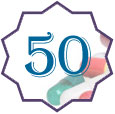With over half a century of market insights on the U.S. consumer healthcare market, Kline & Company expects that new paradigm shifts in regulations, retail, and technology will create new opportunities for medications to move along the Rx-to-OTC continuum and more growth prospects for the U.S. OTC market. Additionally, with the OTC medication market in the United States nearing $23 billion in 2012 alone and with the FDA – through its recent NSURE (Nonprescription Safe Use Regulatory Expansion) initiative – showing encouraging indications that it is becoming more receptive to allowing more Rx-to-OTC switches, the U.S. OTC market is fast returning to pre-recession health.
Celebrating its 50th anniversary, Kline’s distinguished Nonprescription Drugs USA report continues to provide the most comprehensive market intelligence expanding its longstanding OTC drugs industry know-how to include indispensable research on related topics including Natural OTCs, OTC Retailing, OTC Innovations, Impact of Recessions on the U.S. OTC Market, OTC Drugs: U.S. Competitor Cost Structures, OTC Consumer/Shopper Insights and a series of reports on Rx-to-OTC Switch.
In recent years, the U.S. OTC market has been hindered by significant product recalls by major players, with the resultant vacuum – abetted by recession-affected ever cost-conscious consumers – largely claimed by private-label alternatives. Laura Mahecha, industry manager at Kline’s Healthcare Practice, adds, “The impact and profound magnitude of ongoing economic uncertainty is borne out by more than half of respondents in a recent Kline survey disclosing that they’d changed how they purchased OTC drugs. Specifically, nearly a quarter of those surveyed choose private label OTC drugs whenever possible because of their perceived cost advantage.”
Despite the stronghold private-label products have on the market and the highly competitive nature of this market, there is still room for OTC brands to grow and prosper in the coming years with increased focus from major companies on innovations, new product launches and line extensions, and strategic marketing plans.
Currently, Rx-to-OTC switches continue to be a major force driving the OTC market as they increasingly involve large widely used products and drive demand by bringing ex-Rx users to the OTC market. Major Rx-to-OTC switches introduced since 1976 account for nearly $4,555 million in sales in 2012 and represent 32.8% of overall OTC sales (excluding home diagnostics, vitamins and minerals, and herbal products). The increased numbers of switch approvals by the FDA are expected to lead to future gains for the U.S. OTC market and could even create brand new, never-before-available-without-a-prescription categories.
The U.S. OTC market has evolved markedly, beginning with the FDA establishing an OTC review/Monograph system in the 1970s and the landmark Rx-to-OTC switch of hydrocortisone and its subsequent inclusion in OTC first-aid and anti-itch medications. The 1980s saw a recession fuelled spike in private-label OTC sales and the approval of ibuprofen as an OTC drug, in addition to the approval of many allergy, cough, and cold ingredients bringing brands like Nyquil, Benadryl, Triaminic, and Actifed to market.
There are challenges for OTC marketers including but not limited to private-label competition, retailer SKU rationalization, cost-conscious consumers, consolidated number of competitors, and increased scrutiny of manufacturing and quality assurance procedures. However, opportunities exist to see increased levels of growth over the next few years for the companies that have solid brands, good claims, strategic marketing, a steady stream of innovations and line extensions, and efficient and compliant processes.

